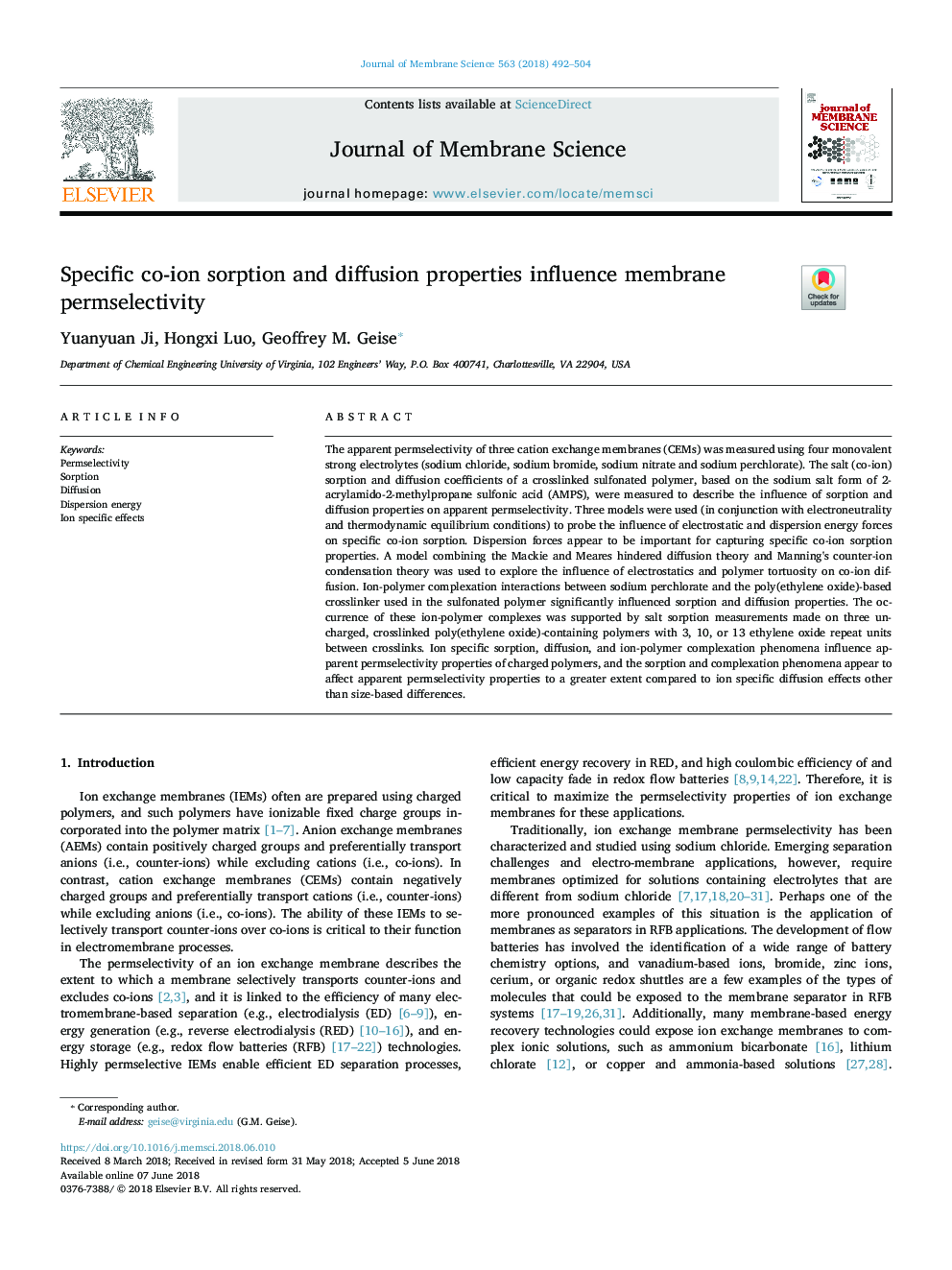| Article ID | Journal | Published Year | Pages | File Type |
|---|---|---|---|---|
| 7019714 | Journal of Membrane Science | 2018 | 13 Pages |
Abstract
The apparent permselectivity of three cation exchange membranes (CEMs) was measured using four monovalent strong electrolytes (sodium chloride, sodium bromide, sodium nitrate and sodium perchlorate). The salt (co-ion) sorption and diffusion coefficients of a crosslinked sulfonated polymer, based on the sodium salt form of 2-acrylamido-2-methylpropane sulfonic acid (AMPS), were measured to describe the influence of sorption and diffusion properties on apparent permselectivity. Three models were used (in conjunction with electroneutrality and thermodynamic equilibrium conditions) to probe the influence of electrostatic and dispersion energy forces on specific co-ion sorption. Dispersion forces appear to be important for capturing specific co-ion sorption properties. A model combining the Mackie and Meares hindered diffusion theory and Manning's counter-ion condensation theory was used to explore the influence of electrostatics and polymer tortuosity on co-ion diffusion. Ion-polymer complexation interactions between sodium perchlorate and the poly(ethylene oxide)-based crosslinker used in the sulfonated polymer significantly influenced sorption and diffusion properties. The occurrence of these ion-polymer complexes was supported by salt sorption measurements made on three uncharged, crosslinked poly(ethylene oxide)-containing polymers with 3, 10, or 13 ethylene oxide repeat units between crosslinks. Ion specific sorption, diffusion, and ion-polymer complexation phenomena influence apparent permselectivity properties of charged polymers, and the sorption and complexation phenomena appear to affect apparent permselectivity properties to a greater extent compared to ion specific diffusion effects other than size-based differences.
Related Topics
Physical Sciences and Engineering
Chemical Engineering
Filtration and Separation
Authors
Yuanyuan Ji, Hongxi Luo, Geoffrey M. Geise,
